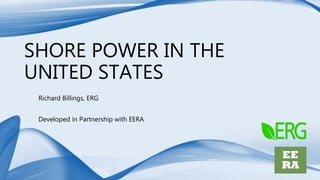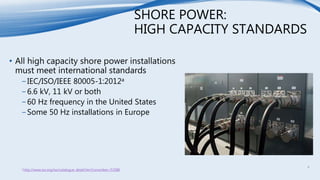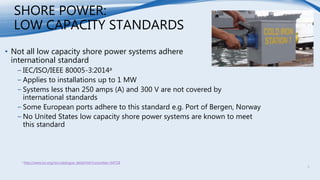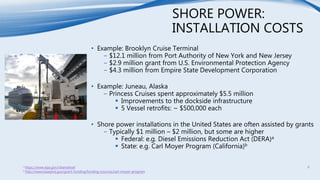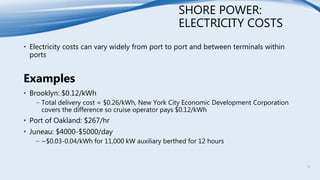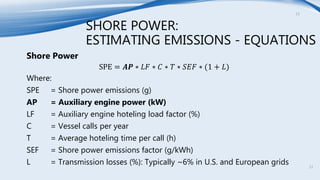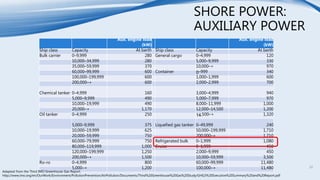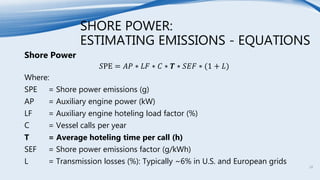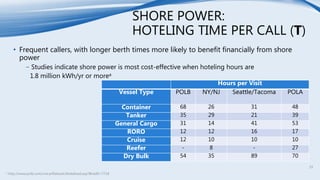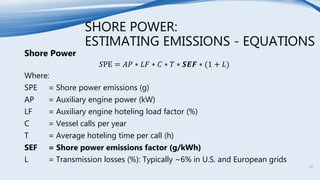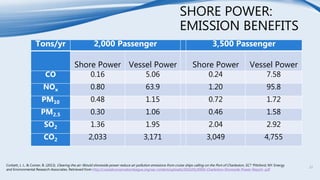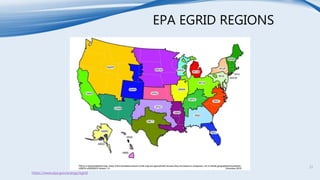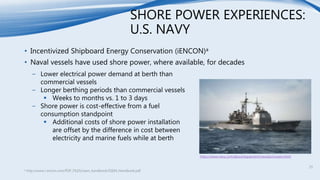Shore power systems allow ocean-going vessels to plug into the local electricity grid while at berth to power auxiliary systems like lighting and air conditioning, rather than using onboard diesel engines. This reduces port emissions. There are two main types: high capacity for large vessels and low capacity for smaller ships. High capacity systems must meet international standards, while standards are less consistent for low capacity. Shore power installation costs can range from $1-12 million depending on the port. Estimating emissions reductions requires data on vessel size, calls, hoteling time, engine load factors, and grid emissions factors.
